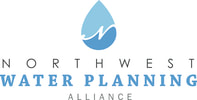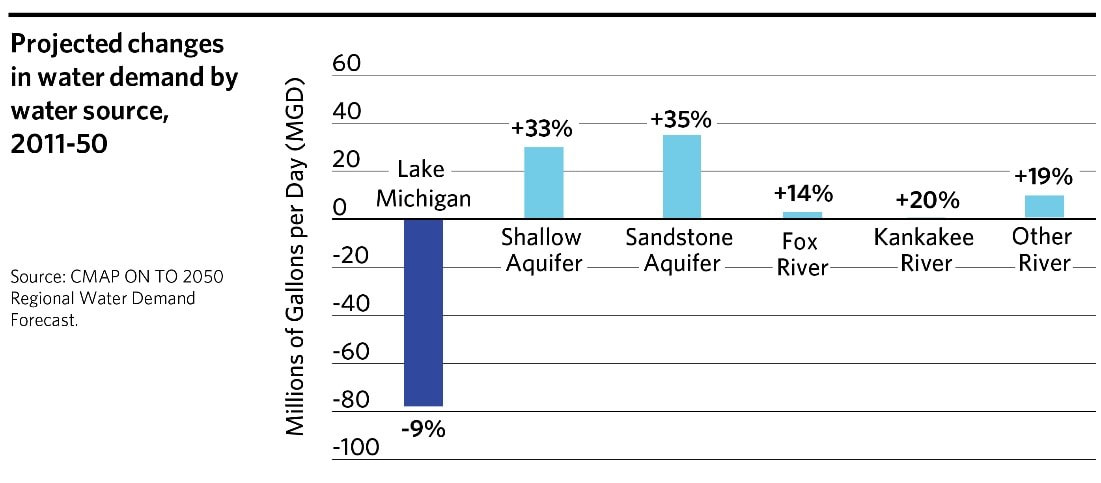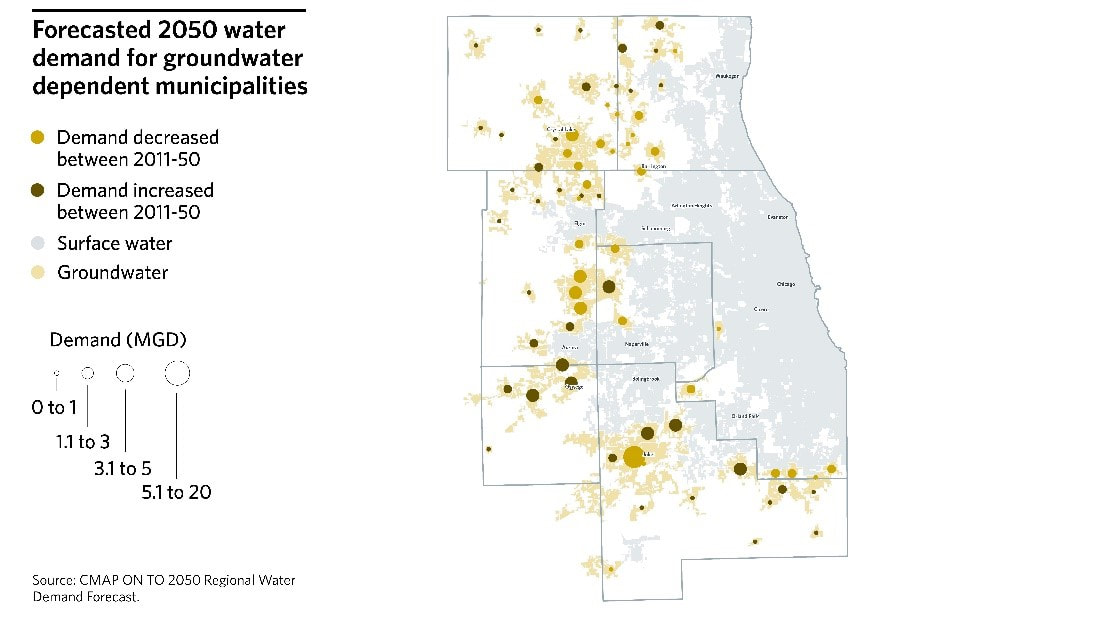|
Significant portions of the Chicago region – especially those dependent upon groundwater sources -- are encountering water supply and quality issues. The region’s comprehensive plan, ON TO 2050, anticipates these issues will grow unless additional steps are taken to coordinate and conserve the region’s shared water supply resources. The recently updated regional water demand forecast revealed that while overall water use is stable, projected demand will exceed available groundwater supplies in some areas. Yet with additional conservation and efficiency measures, the region can maintain its long-term drinking water supplies. Forecasted demand exceeds available groundwater supplies The ON TO 2050 Regional Water Demand Forecast was developed to inform decisions about land use, transportation, and infrastructure that affect water supply and demand. Water demand is projected to substantially increase in areas currently relying on shallow and sandstone groundwater aquifers. Currently, the Illinois State Water Survey estimates that withdrawals from sandstone aquifers are occurring at twice the natural recharge rate. The resulting decline in groundwater levels raises concerns about the ability of groundwater wells to continue to provide the necessary quantity and quality of water to meet local water demands. If current demand continues or forecasted growth occurs, switching water sources may become necessary in many communities. Reducing demand on sandstone groundwater aquifers will also be needed to ensure this resource continues to be available as a primary or secondary source for communities. The forecast is presented in 5-year intervals to the year 2050 at the municipal, county, and regional scale, as well as by existing drinking water source and sector for the seven counties of the Chicago region.
Going Deeper Changing water demand: Projecting water use in the Chicago region to 2050 provides a brief overview of forecasted water demand by 2050, important factors driving water demand, and how planning decisions can help to conserve shared water supply resources. For more details on the methodology, see ON TO 2050 Regional Water Demand Forecast for Northeastern Illinois, 2015-50. In addition, community-level demand forecasts, reported water withdrawals, and data on current and projected demand drivers for 245 municipalities are available for download on the CMAP Data Hub. For additional information on the water demand forecast methodology and how to use the data in your community, contact Nora Beck or Margaret Schneemann. Comments are closed.
|
ABOUTThe latest updates page features posts about issues affecting NWPA member communities and best practices, drawing on interviews and conversations with experts. Archives
July 2024
Categories
All
|


